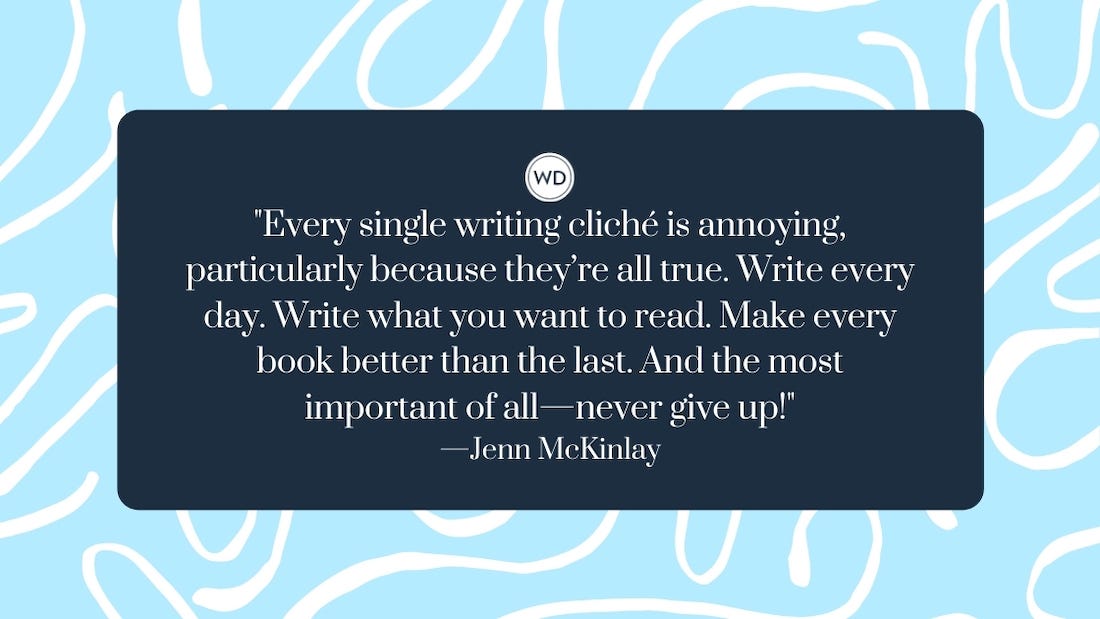Women’s Fiction Forecast
Is chick lit on the way out? Don’t bet your Blahniks. Instead, the genre has branched out into surprising new arenas, offering great opportunities for aspiring novelistsand even nonfiction writers.
Despite periodic rants from literary critics that chick lit shouldn't be allowed in print and fearful speculation from chick-lit writers that the genre has peaked, this trendy offshoot of romance is alive and well and filling local bookstores with pink cover art. In fact, the form has prospered so enormously that nearly every sector of popular fiction hopes to institute its own particular version.
"I define 'traditional chick lit' as books in which offbeat single young women deal with love, life, work, friends, family and shopping," says Nadia Cornier, a literary agent with the Creative Media Agency in New York City. "The theme is as classic as the old 'boy meets girl,' so I don't see it going away any time soon."
What has changed is the reader's appreciation for the depth of character and circumstances that this topic can cover, Cornier says. "The novels are no longer just about owning that great pair of shoes. Chick lit, in all its recently varied forms, focuses on women's lives and tribulations in a fun-filled way and, with each new publication, writers have to dig deeper and expose more."
Kayla Perrin, a women's fiction author with 16 published novels to her name, believes that the chick-lit market remains smoking hot. "Why? Because every publisher out there now has a line to publish chick-lit stories. And they're venturing into newer territory that includes ethnic stories, which is a definite sign of its growth." She adds that some publishers are even taking on chick-lit erotica and notes that she's sold three such novels to Harlequin for its Spice line. "The tone is totally chick lit, but I can include some 'spicier' scenes."
Who's buying
Harlequin is also the home of chick-lit imprint Red Dress Ink (RDI), where executive editor Margaret Marbury issues three titles a month in trade paperback and two to four hardcovers per year. Marbury describes the imprint's offerings as having a "metropolitan edge." RDI heroines can also be older than the usual 20s and 30s (the older versions are sometimes called "hen lit").
"The marketplace is pretty competitive," Marbury says. "The best will survive and thrive, but only the best—those that hit a universal nerve with readers."
RDI isn't really interested in new and innovative titles that might miss the now-established market, but it does aim at being "better than ever." Marbury observes that the quality of submissions has steadily improved as writers have gained an understanding of the chick-lit approach. She looks for humorous stories related in a somewhat familiar voice. She cited two RDI bestsellers as examples—You Have to Kiss a Lot of Frogs by Laurie Graff and Tales of a Drama Queen by Lee Nichols—saying that even the titles reflect an over-the-top humor, while at the same time striking a tone women readers can relate to.
John Scognamiglio, editorial director at Strapless (a Kensington Publishing imprint), promises authors that "chick lit is here to stay." The line, which releases one title per month, primarily covers the basic chick-lit premise (single girl on the lookout for Mr. Right). Scognamiglio is also interested in mommy lit for the line—stories of young mothers who aren't so sure how this happened to them.
Stephanie Lehmann, an agent with the Elaine Koster Literary Agency in New York and author of mommy lit title Are You in the Mood? (Strapless), says, "I don't think the audience is just moms. I think many readers are actually women who haven't had babies yet but are thinking about it and are curious about the experience." She also notes that when she was at the Romance Writers of America convention in Dallas this past summer, the editors all asked for mom lit in addition to chick lit.
Young adult (YA) chick lit is very hot right now, Lehmann adds. "In the same way publishers are trying to expand chick lit to an older audience with hen lit and mom lit, they also want to expand to younger audiences." For that matter, editors seem to be looking for narrative nonfiction chick lit, as well. "It seems as if anything that can fit into the 'chick lit' rubric is desirable," Lehmann says.
At Dorchester's Smooch imprint, editor Kate Seaver says they call the YA chick lit "locker lit," because girls tend to keep the books handy in their lockers. "It's a wonderful genre and selling very well," she says. Strong-selling authors for her in this one-book-a-month line include Katie Maxwell, whose initial offering, The Year my Life Went Down the Loo, was told as an exchange of e-mails. Also a hit with the 12-to-16 crowd is Jax Abbott, writing about a protagonist who not only faces typical chick-lit disasters but has super powers. "The trends at Smooch are driven by what the authors write," says Seaver, who also edits Making It, a Dorchester chick-lit line for adults.
Get a clue
Chick lit is proving itself in the mystery corner of the genre universe, as well. Sarah Durand, an editor at HarperCollins' Morrow/Avon imprints, says, "Avon Trade began a few years ago and has seen tremendous success in the chick-lit market. On the mystery side, we've long tried to appeal to romance readers, and we've now found that crossing chick lit with mystery is the perfect way to do that."
One of Durand's chick-lit mystery authors, Susan McBride, says that she was writing chick-lit mysteries before she even knew about the genre. "My first Debutante Dropout Mystery with Avon, Blue Blood, was actually written years ago. I'd produced a mystery with a dead body and a crime to solve, yet the story was told from the point of view of a young woman with lots of quirky opinions on everything. Until the label 'chick lit' came into being, I had no way to describe the novel. But when I could—and did—the book sold quickly."
McBride distinguishes chick-lit mysteries from the usual funny amateur sleuth novels: "Chick-lit protagonists have a sassy, sarcastic and sometimes cynical point of view that sets them apart—an attitude you don't find in most traditional humorous mysteries." More and more mystery lines are aiming to capture the chick-lit tone.
Christians are chicks, too
Representing another part of the chick-lit bandwagon, Kristen Billerbeck's What a Girl Wants launched the WestBow Press fiction line at Christian publisher Thomas Nelson. Billerbeck decided to write for the Christian chick-lit market, she says, "Because I worked with singles in ministry, and I loved that age group."
She sees a huge market here and pointed out that even Silhouette (Harlequin's sister publishing arm) has started Steeple Hill Café to capture the audience. The Christian chick-lit publishers also include Integrity (The Yada Yada Prayer Group), Multnomah (the Sisterchicks series) and Random House's Waterbrook imprint, but Billerbeck says the trends within Christian chick lit can't be predicted right now. Her own pastel-covered titles—What a Girl Wants; She's Out of Control; and With This Ring, I'm Confused—are aimed at the premarriage set but, Billerbeck adds, "I know there's a big leaning toward mom lit for the Christian market."
The only disappointing area of the chick-lit world for publishers has been "lad lit." Though lad lit—stories of young men with the same type of angst that chick-lit protagonists seem to suffer—continues to be published, the subgenre hasn't had a blockbuster yet. The professionals, however, haven't given up, and agent Cornier had this to say: "I think lad lit will rebound from initial disappointing sales. Just not right away. We still watch What Women Want and Jerry Maguire—lad-lit concepts, both-with rapt fascination. Since lad lit seems to be written for men, perhaps the publishers need to rethink their intended audience. The novels may simply sell better to women."
How you fit in
Should you switch gears from whatever you've been focused on in your writing and try for the broiling-hot chick-lit market or one of its variants? Well, it depends. Chick lit does have room for the skilled newcomer, and the offshoots are definitely in search of breakthrough novels. The market has grown up somewhat, but it's not yet fully mature or over-saturated, despite conjecture. You can join in with a novel of your own and find a warm welcome.
But approach these markets only if this is really the voice you've been wanting to express, yet you didn't know where such a book might fit. Read a sampling of the books and then find your own means to convey this ultra-contemporary, fun-filled feel.








